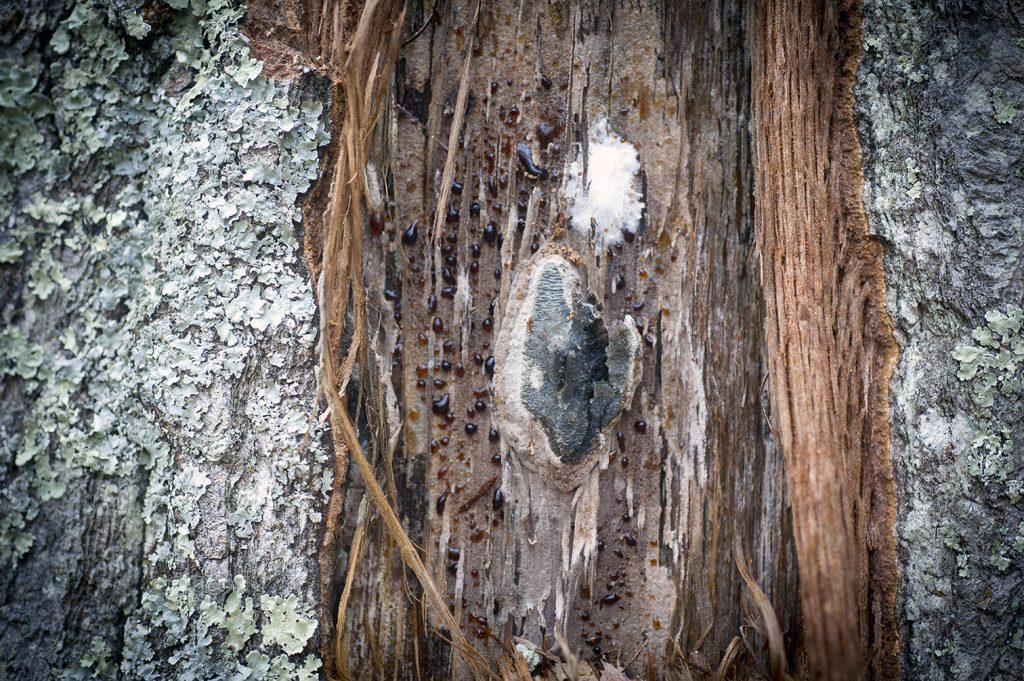
Date April 03, 2023
Elm trees are beloved for their elegant beauty and the pleasant shade they provide their surrounding landscapes. They grow luscious, green leaves in the summer and change to a rich, yellow-gold color in the fall. Unfortunately, these trees are prone to contracting a devastating sickness called Dutch elm disease, which can eventually kill them. In this blog post, we explain some Dutch elm disease symptoms and how property owners can help their sick elm trees.
What Is Dutch Elm Disease?
Image via Flickr by Mary Gillham Archive Project
Dutch elm disease is an illness that spreads through two related fungi, Ophiostoma ulmi and Ophiostoma novo-ulmi. The disease spreads rapidly from infected trees to healthy trees by elm bark beetles. Once infected, the elm tree plugs its own vascular tissues, which carry water from the roots to the rest of the plant, ultimately depriving the tree of its nutrients and killing it.
The history of Dutch elm disease proves it is capable of causing epidemics that kill tens of millions of elm trees worldwide. However, decades of studying the disease show monitoring elm trees for symptoms can help prevent the spread and restore trees to good health.
What Are the Symptoms of Dutch Elm Disease?
Although Dutch elm disease can take years to spread and kill an elm tree, it can also ravage a tree in one season. Typically, symptoms begin showing in late spring or early summer, but they can also develop during an elm tree’s growing season. Here are important signs of Dutch elm disease to look for:
Wilting, yellow leaves. The disease first spreads through the tree’s branches, creating clusters of yellow leaves.
Premature leaf drop. Leaves generally begin to fall in autumn and winter; any other time of year is unseasonal and concerning.
Flagging. Branch flagging occurs when brown leaves appear on individual branches against the tree’s green crown.
Streaking. Twigs affected by the disease begin showing dark streaks, spots, or rings beneath the tree’s bark.
Because Dutch elm disease spreads through the tree’s vascular system, it takes time to extend throughout the different sections of the tree. This spread often leads to an elm tree exhibiting healthy green foliage with a mixture of yellow or brown leaves and drooping branches. These symptoms indicate the tree contracted the disease and needs immediate help.
Is Dutch Elm Disease Manageable?
If caught early, Dutch elm disease is manageable but only with proper care and maintenance by tree care professionals. TreeNewal provides tree care services in the Dallas-Fort Worth, Texas, area. First, we will assess your elm tree and make a proper diagnosis. Then, we can prevent the spread of Dutch elm disease by expertly removing infected branches and dying bark and injecting the tree with fungicides. We also take extra protection measures with soil and tree nourishment with our disease management team.
Due to elm bark beetle activity, the fungi that cause Dutch elm disease spread quickly and can destroy the beautiful elm trees in a backyard or forest. Luckily, fixing an infected tree is possible if property owners know how to spot the symptoms of Dutch elm disease. Our TreeNewal team of ISA-certified arborists knows how to help, so call us with your tree concerns today.









